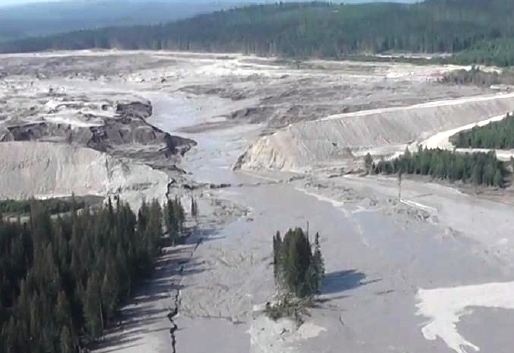The British Columbia Environmental Assessment Office announced Thursday it’s adding information requirements for mines undergoing environmental review to ensure the safety of new tailings facilities. The changes were spurred by last year’s tailings dam collapse at the Mount Polley mine, which spilled millions of gallons of mine waste into creeks and lakes.
B.C. Environment Minister Mary Polak said this is the next step in following recommendations made by an independent review of the Mount Polley disaster.
“These mines would have ordinarily proceeded with requirements that were in place prior to the geotechnical report coming out. Those requirements would not have been sufficient to address the recommendations. So by adding these information requirements, we will incorporate the recommendations from the geotechnical report into these existing applications,” Polak said.
The report found the collapse was caused by too much weight being put on a layer of glacial sand under the dam’s foundation.
Mines that are proposing to build tailings facilities will have to consider the potential risks of their preferred design and have a feasible plan to address those risks. They will be required to assess possible environmental, health, social and economic impacts of a dam breach.
The Environmental Assessment Office will also require mine companies to provide information on multiple alternative options for tailings management to ensure the mine is choosing the safest option. That will include a comparison of best practices and technologies for tailings management.
Guy Archibald is mining and clean water program manager at the Southeast Alaska Conservation Council.
“I think there’s a vast difference between the recommendations of the Mount Polley investigation and what the Environmental Assessment Office is proposing here,” Archibald said. “They’re basically just looking for more information on tailings dam alternatives.”
Archibald said the safer option of dry-stack tailings management was rejected at the Kerr-Sulphurets-Mitchell (KSM) mine when it was undergoing environmental assessment. He said B.C.’s new requirements did nothing to quell his concerns about future tailings dams near Alaska.
“The main thing about the Mount Polley investigation report was that mines had to put safety over profit. And I just don’t see that level of concern here from the B.C. Environmental Assessment Office,” Archibald said.
The new information requirements only apply to proposed mines that are going through the environmental assessment process. Schaft Creek, a proposed mine in the Stikine River watershed, will have to comply with the new requirements. The Red Chris and KSM mines, both upriver from Southeast Alaska, are not affected because they already passed through the environmental assessment process.
The Red Chris mine, which is run by Mount Polley owner Imperial Metals, is not fully operating yet. But it is using an interim permit to start filling its tailings pond and producing copper.
Existing tailings dams are being investigated by the B.C. Ministry of Energy and Mines.
Environment Minister Polak said this is an interim measure while the Mines Ministry reviews provincial mining regulations. She said the full response to the Mount Polley mine incident will take a long time.
“You will see step after step as we gather more information and as more recommendations become clear. This certainly isn’t the end of the response,” Polak said. “It’s just one more step.”
Meanwhile, the Mining Association of Canada, an industry group, is reviewing its tailings management program.













